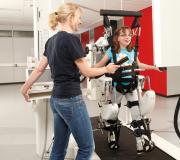Air water heat pump connection diagram. Air-to-water heat pump for home heating - it's worth knowing
Heat pumps like " air-water» is an effective way to save money for owners of private homes and commercial buildings. Taking air from the street, the unit converts its energy into heat to heat water. This operating principle allows you to heat not only a room, but also an artificial body of water, for example, a swimming pool, with maximum efficiency. The use of available natural resources such as water and air guarantees a quick return on investment. The energy efficiency of air source heat pumps ensures their high popularity in both the international and domestic markets. In leading European countries, Austria and Germany, the share of sales of air-type heat pumps reaches 70%.
Air heat pump: design features and operating principle
Because the air-to-water heat pump completely covers the issue of high-quality heating and stable water heating, then the solution buy it is becoming increasingly relevant. Unlike centralized heating systems, this design allows not only to heat the room more economically, but also to cool it or maintain a comfortable temperature in the pools. Versatility and a significant reduction in utility costs are the undeniable advantages of these units.
Externally, an air-to-water heat pump for domestic needs resembles an air conditioning system. The design, consisting of an indoor and outdoor unit (sometimes two), includes:
- evaporator - a type of heat exchanger that is located in the outdoor unit and is responsible for absorbing heat from the air;
- compressor - a mechanism that, by compressing the refrigerant, ensures an increase in its temperature;
- condenser - an element of the internal module that is responsible for transferring heat from the refrigerant to water (for example, a heating system).
A high level of productivity combined with cost-effectiveness makes the equipment attractive to a wide range of consumers. If you want to create a pleasant microclimate in your home without large investments, it’s time to choose air-to-water heat pump, after all price devices is more than democratic.
To fully understand the benefits of purchasing a unit, you should understand the principle of its operation:
- The collector, located in the outer part of the structure, sucks in air from the street.
- Contact occurs with the evaporator - the procedure of heat transfer from air to refrigerant begins.
- The substance (refrigerant) circulating in the evaporator boils at low temperatures, turning into gas.
- The gaseous refrigerant enters the condenser, where, under the pressure of the compressor, the substance is compressed and its temperature increases.
- The heated substance, entering the condenser, transfers heat to the water, after which it cools again, turning into a liquid.
- Through an expansion valve installed in the circuit, the refrigerant returns to the evaporator, where the cycle is repeated.
Thanks to the use of such a natural resource as air, the cost of heating is significantly reduced. This factor makes air source heat pump a much more attractive option compared to gas and electric heating systems, and price The unit pays for itself in a relatively short period of time.
Air-to-water heat pump for heating as an alternative to a centralized system
The cost of energy resources is growing day by day, which forces modern consumers around the world to look for replacements for expensive heating systems in the form of cheaper analogues. In this plan, Air-to-water heat pump- ideal choice for home heating. The design can be used both in buildings under construction and to improve an existing heat supply system, regardless of the area of the home.
Air source heat pump for home heating profitable buy residents of regions with a temperate climate, where the temperature in the cold season does not exceed -15 °C. The economic benefits of installing such a system are due to the abandonment of a standard heating system (there is no need to pay for gas and water heating), simple installation and uninterrupted operation. At the same time, the equipment shows relatively good results even in severe frosts, maintaining a microclimate in a living space that is comfortable for humans.
Criteria for selecting an air source heat pump
On air source heat pump for home heating price varies depending on the configuration and performance of the unit. Therefore, when choosing the best option for an air heating system for your home, you must take into account the following pump characteristics:
- Design feature.
- Climatic conditions.
- Power.
- Coolant temperature.
Design
The modern market offers two types of heat pump designs - monoblock and split. The monolithic block can be installed both indoors and outdoors. The disadvantage of an external monoblock is that the system freezes at very low temperatures, while the internal one is noisy during operation and the need to move the air intakes outside, which is not always possible in the case of reconstruction.
Split – air source heat pump for heating, which has absorbed all the positive aspects of the external and external candy bar. It is not afraid of severe frosts, the source of noise is located outside, and the indoor unit takes up little space. Meanwhile, the limited distance between the air intake and the indoor unit requires the allocation of additional space when installing from the outside of the building.
Power
You can determine the heat pump power required for a room by calculating the heat loss in the room. The optimal solution is to choose a heat pump whose performance covers the heat losses.
The calculation of the expected heat loss and the amount of energy required to cover this difference in one hour is simplified by the already derived average indicators:
- 50 W per 1 sq. m – for an apartment in a multi-storey building;
- 60 W per 1 sq. m – for a well-insulated house;
- 80 W per 1 sq. m – for the average estate;
- 100 W per 1 sq. m - for a poorly insulated house.
At the same time, one should not forget about such factors as poorly glazed windows, poor airtightness of the room, and the prevailing temperature range. A properly selected heat pump guarantees high performance and durability.
Coolant temperature
An important criterion for a home heating system is the choice of coolant temperature. There are high temperature and medium temperature models. The latter are optimal for installing heated floors, air conditioning systems, and pool heating in a room. At the outlet they produce a water temperature of no more than 50 ºС.
High temperature heat pumps are ideal for radiator heating systems where there is no need for air conditioning and only heating and hot water are required. They are not as prone to large losses in power and performance during severe frosts as they are for medium-temperature units. Meanwhile, this option is not compatible with underfloor heating systems or, if necessary, heating a pool.
Pool heat pumps
Air-to-water heat pump are widely used for swimming pool heating, because price it is much lower than the costs of gas heating equipment. With such a system, a comfortable water temperature for swimming will be maintained all year round.
What power buy heat pump for pool, will depend on several factors:
- compatibility with the tank and existing heating system;
- volume and shape of the tank.
A practical option for arranging a home pool would be air-to-water inverter heat pump. This device allows you not only to heat water to a comfortable temperature during the cold season, but also to cool it in the heat, creating ideal conditions for a pleasant stay.
Purchasing heat pumps as a profitable investment
Inexpensive air-to-water heat pump- the optimal solution for arranging modern housing. Summarizing the main advantages of the equipment, we highlight them:
- efficiency;
- durability;
- functionality;
- environmental friendliness due to the lack of fuel;
- simple installation process;
- high level of operational safety.
Russian-made air-to-water heat pump, meets the above parameters and is not inferior to imported analogues. Domestic heat pumps are offered by the manufacturing company SMAGA. The company's website presents a wide range of heating equipment for installation in residential, industrial and commercial premises. The use of high-quality mass-produced products from SMAGA guarantees a high level of comfort for consumers.
To receive advice on choosing the optimal heat pump model specifically for your home, you need to contact the SMAGA manager by phone or e-mail indicated in the header of the site.
Installation of an air-to-air heat pump, unlike ground and water heat pumps, does not require laying pipes or drilling wells. It is simpler and much cheaper, but has its own characteristics.
An air source heat pump that is installed and connected in the wrong way may not work efficiently. Its conversion factor will decrease, which will affect the payback period.
Types of air-to-air heat pumps
There are two types of heat pumps of this class - monoblock and separate. As a rule, monoblocks have low power, up to 2 kW of consumed electricity. In a separate version, the heat pump power can reach up to 10 kW, although this is rare and such heat pumps are usually made to order.
In a monoblock, all equipment (condenser, evaporator, compressor, etc.) is collected in one housing. Usually they have a controller (control panel), but sometimes it can be remote or supplied separately.
The second type of air heat pumps is separate. They have a main unit (see photo) and an external one. The outdoor unit contains an evaporator and a compressor, and the indoor unit contains a condenser. They are connected to each other by a line in which the refrigerant circulates.
Installation of a monoblock heat pump
This equipment has a low noise level due to low power. Installation of such an air source heat pump comes down to its installation, connection of air ducts and power supply.
When choosing a location, it is worth remembering that the further the blocks are spaced, the greater the heat loss will be. Experts say that there should be no more than 5 meters of track between them, but often this cannot be realized (see photo). Especially when it comes to providing heat to a large house. The tubes must be insulated, not with improvised means, but with special thermal insulation, preferably with a metallized coating.
Today, a water-to-air heat pump is a very useful and convenient means of heating your home. It can easily heat a room using outside air, even cold air.
There are several types of such equipment, which in most cases are intended for use in private homes. But we will also look at a pump that is very easy and possible to install in office and residential areas where there is not a large enough space to accommodate the equipment.
Air-to-water heat pump
In order to be able to use the energy that surrounds us everywhere, they came up with a unit called a heat pump. They work according to a system called the inverse Carnot principle. Air conditioners and refrigeration units also operate on this principle.
The principle of operation of the pump is as follows: air from outside enters inside through a fan, which is located outside. Then it passes into the next part - the evaporator. There is a substance that is necessary to heat the air. Freon gas is usually used.
It is also common in refrigeration equipment. This substance, the refrigerant, is located inside a serpentine copper pipe at the bottom of the evaporator. During the heating process, the refrigerant evaporates and enters the next part of the installation - the condenser. There, the substance passes from a gaseous state to a liquid, during which a lot of heat is released, which helps to heat the room.
This process occurs constantly in a circle and due to the circulation of freon, the air in your home is constantly recycled.
Heating with air-to-water heat pump
The fan can be placed either on the wall of the house or in the area adjacent to the house. But it is worth considering that there must be excellent air circulation in any case.
It is not recommended to use such a pump if you have conventional radiators in your house. They are best combined with an air system or a “warm floor” system. At the same time, it will help you save money because you will spend less on heating with a traditional system.

Heat pumps air water reviews and benefits
The unit has many advantages, among them the following can be noted:
- heating of the air in the room occurs at any time and at any temperature, even if it is negative. At the same time, there is no need to spend additional money on fuel, since air is an accessible and free means.
- This type of pump is easy to install. You can make such a system with your own hands without any problems. In this case, you do not need to spend a lot of effort drilling, concreting or making trenches.
- significant savings on the equipment itself. You can make a pump by spending much less money on it than if you buy another similar type of system in a store.
- Ease and noiselessness of the installation.
- Possibility of automatic system control.
An air-to-water pump is very convenient because you do not need to install pipes through which air can move. You just need to install the fan, having previously covered its blades with a grill.
But when choosing such equipment, you need to take into account some disadvantages: it is best to use such a system in places where the winter is not very severe, because at sub-zero temperatures (below 6-7 degrees) the pump may malfunction. Electricity is also required to ensure the operation of such a pump. But even compared to spending on electricity, you will save much more than using gas or other types of electric heaters.

DIY air water heat pump
Now let's see how you can assemble the pump yourself.
It is usually quite difficult to make a compressor yourself, so you need to take a ready-made one. If purchasing it in a store is too expensive for you, then you can use a compressor that is on a split system. This pump has excellent characteristics, best suited for our installation. We will also need two large tanks: one plastic and the other metal. And you will also need to make two serpentine structures from a copper pipe. The refrigerant will move through them.
You can make them into a spiral by twisting them onto a cylindrical object. You will place one coil in the condenser (steel tank), and the second in the evaporator - respectively, in a plastic barrel. Well, additional parts will be needed: a drain valve, adapters and brackets, refrigerant and electrodes.
Please also note that when connecting the device, a large current is required.
After installing the coils, you need to weld the steel tank and connect the components into a common system. In order to run freon into a copper pipe and at the same time check the functionality of the structure, you need to use the services of a refrigeration equipment specialist.
Before putting the pump into operation, it is worth determining how much power you need. To avoid additional expenses, do not make the pump more powerful than you need.
To do this, you can use the services of specialists who have special programs for calculating power, or you can calculate it yourself - on special websites.
You also need to take care of insulating your home prematurely, because the winter air temperature in the house will depend on this. And savings on heating supplies will also depend.
The use of inexhaustible natural resources of clean energy brings not only economic benefits, but also allows you to save non-renewable energy resources - oil, gas, coal. Heat pumps make it possible to effectively use natural heat for space heating and water heating.
Among all types, the greatest use, due to the principle of operation and its technical characteristics, is found in the air-water heat pump, which many craftsmen, due to its high cost (a factory model from Daikin with average parameters without installation costs about 14,000 USD) assemble and install with their own hands.
Fig.1 Operating principle of an air-water heat pumpIn Russia, due to the relative cheapness and availability of natural gas, mainly used for heating, these devices are not very common. In addition, due to their high cost, factory-made heat pumps are not available to the vast majority of the population, which forces many people to make calculations and assemble such devices with their own hands to save money.
The attitude towards heat pumps is completely different in the USA, Japan and many European countries (Germany, Sweden, Finland, France, Norway, Switzerland) - there people not only know how to count money, saving energy resources, but also care about the cleanliness of the environment.
In America, about 1 million heat pumps are produced annually, which are always sold in the northern regions - the law obliges construction companies to install this equipment in newly constructed buildings.
There are 3.5 million heat pumps in operation in Japan, with an annual sales volume of 550 thousand units.
 Rice. 2 Air-to-water heating heat pump - main components
Rice. 2 Air-to-water heating heat pump - main components In Sweden, heat pumps heat more than half of the houses; in Germany and Finland, the state provides financial support to families installing this equipment. In Germany, at the beginning of the era of the spread of heat pumps, the government subsidized 50% of the cost of equipment; currently, only a preferential tariff for electricity remains; 3,000 euros when purchasing and installing a heat pump with your own hands are reimbursed by the state in Finland.
The Japanese not only widely use heat pumps, but are also innovators in the development of technology and world leaders in the production of heat pump equipment.
Leading Japanese manufacturers of air-to-air heat pumps are widely represented on the Russian market - Daikin (Altherma air-to-water models) and Mitsubishi Electric (Zubadan line of air-to-air heat pumps), less common are products of the famous brand Hitachi Yutaki, Chofu, Fujitsu.
The volume of production of pumping equipment is evidenced by the fact that at its 12 enterprises with 30 thousand employees, Daikin supplies more than 1 million units of pumping equipment to residential buildings, shopping centers, office buildings in Japan, the countries of the European continent and Russia in 1 year.
Mitsubishi Electric, a company founded in 1921, is a world-famous brand that produces a wide range of electronic equipment from household electrical appliances to space systems. There are approximately 108 production sites and research and development centers on the global continent outside of Japan, thanks to which Zubadan air heat pumps can operate efficiently at air temperatures down to -25 C.
 Rice. 3 Installation of heating equipment with a heat pump in the house
Rice. 3 Installation of heating equipment with a heat pump in the house In addition to Japanese manufacturers, heat pumps are produced by many well-known European brands (Nibe, Stiebel Eltron, Dimplex, Nibe, AJ Tech, Technibel, Atlantic, Airwell, Bosch, Vaillant, Viessmann, Wolf, De Dietrich, Ferroli), Koreans (LG and Samsung) and Americans (FHP, KlimateMaster, Mammoth), but their share in the Russian market is significantly less than that of Japanese concerns.
Features of air-water heat pumps from leading manufacturer Daikin
 Rice. 4 Main components of the Daikin Altherma heating system
Rice. 4 Main components of the Daikin Altherma heating system One of the most famous heating systems on the market using air heat pump technology, Daikin Altherma has the following features:
- In addition to heating, the Daikin Altherma system produces water heating and air cooling in the summer (air conditioning).
- The efficiency coefficient of the COP system is 3 - per 1 kW. the consumed electricity produces 3 kW. heat. This is 5 times more efficient than heating rooms with natural fuel or electric boilers.
- The system consists of a compact outdoor and indoor unit, the first is quite easy to install, and unlike other types of heat pumps, it does not require large-scale excavation and drilling work.
- Daikin Altherma is environmentally friendly and does not directly emit carbon dioxide; operational safety is guaranteed by the absence of flammable and harmful substances and hazardous physical processes during operation in the system. The company's heat pumps were the first in the world to receive the Eco-label.
- The system can work with a solar collector and an ambient temperature of at least - 20 C.
- A distinctive feature of Daikin from other manufacturers is the production of heat pumps in two versions: low-temperature (water for heating the house at the outlet has a temperature of up to 70 C) and high-temperature - Daikin Altherma High Temperature produces water up to 80 C.
Selection of heat pumps for home heating from Daikin.
 Rice. 5. Design of the external and internal Daikin Altherma unit
Rice. 5. Design of the external and internal Daikin Altherma unit Selecting a suitable Altherma heating system involves 3 steps:
- Determination of the required water temperature at the system outlet and calculation of the thermal load.
- Calculation of thermal energy losses during its transmission and ventilation.
- Selection of Altherma system using special Daikin programs based on previous loss calculations.
 Rice. 6 DIY heat pump
Rice. 6 DIY heat pump Prices for heat pumps:
One of the goals of the European RES Directive on natural fuels is a 20% transition to renewable energy sources, which includes air, by 2020. Calculations show that air heat pumps consume 3 to 5 times less electricity when heating premises than traditional types of heating systems.
Factory models are quite expensive and will pay off, depending on operating conditions, in 10 - 15 years, but if you correctly calculate and manufacture an air-water heating system with your own hands, it will begin to pay off much earlier.
Due to the regular increase in the cost of heating fluids, alternative heating methods are becoming in demand. For example, a practical air-to-water heat pump that uses air energy for heating. The installation does not require expensive consumables, is easy to use, and safe.
Due to the considerable price of factory assembly of the unit, many people are interested in independently constructing this system. We will tell you what a home craftsman will need to build a homemade heat pump. Here you will find out what technical equipment you should stock up on.
The heat pump, which this article is devoted to, unlike other modifications of a similar device (in particular, ground-water), has a number of advantages:
- saves electricity;
- installation will not require large-scale excavation work, drilling wells, or obtaining special permits;
- If you connect the system to solar panels, you can ensure its complete autonomy.
A significant advantage of a thermal system that extracts wind energy and transfers it to water is its 100% environmental safety.
Before you begin designing a pump, you need to find out in which cases the system is most effective and when its use is inappropriate.
A heat pump system that extracts energy from the air mass can be used to heat all types of coolants used in the CIS: water, air, steam
Specifics of application and operation
The heat pump works productively exclusively in the temperature range from -5 to +7 degrees. At an air temperature of +7, the system will generate more heat than necessary, and at temperatures below -5, it will not be enough for heating. This is due to the fact that the concentrated freon contained in the structure boils at a temperature of -55 degrees.
Image gallery




